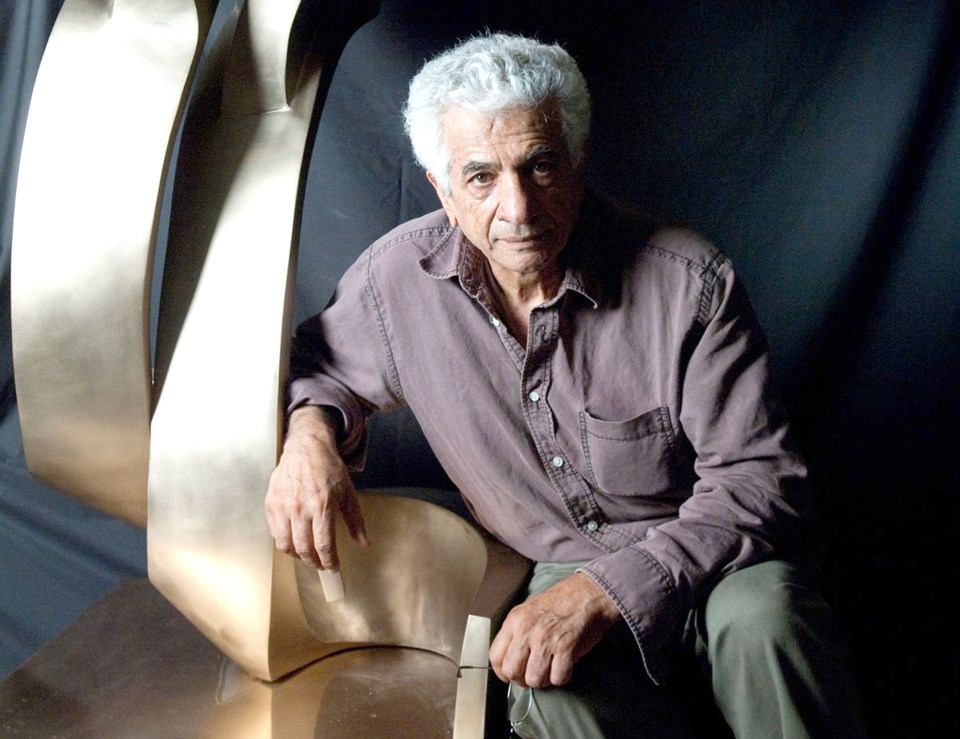A celebrated sculptor who has been barred from leaving his home country of Iran is hopeful he will be free to travel again following a court hearing in that country Saturday.
Parviz Tanavoli, who divides his time between Tehran, Iran and West Vancouver, had his passport seized by authorities and was stopped from leaving Iran in the past week.
Repeated inquiries regarding the sudden revocation of his passport were met with cursory explanations, according to the artist and author.
Tanavoli had been scheduled to appear at the British Museum to promote his new book, European Women in Persian Houses, a chronicle of paintings of western women that frequently adorned homes in the Isfahan province of Iran during the 19th century.
When speaking to arts website hyperallergic.com, Tanavoli said he suspected the book’s cover was the reason he had been detained. The cover depicts a woman wearing a sheer robe.
He has since retained legal counsel and is not worried “as he has not done anything wrong,” wrote his daughter, Tandar Tanavoli.
The 79-year-old artist and collector of Persian artifacts, who has called West Vancouver home since 1989, is spending his days working in his studio while awaiting the court date, according to his daughter.
Canadian consular officials are aware of the issue and standing by to offer assistance, according to Global Affairs Canada media relations officer Rachna Mishra.
Frequently inspired by Persian culture and history, Tanavoli exhibited a 1.5 ton sculpture Oh Persepolis II, a tribute to the ancient city, at the UBC Museum of Anthropology in 2013.
He began work on the bronze monolith in 1975 but a confluence of reasons, including the Iranian Revolution, prevented him from finishing it at the time.
Tanavoli’s best-known work may be a series of bronze, fibreglass and ceramic sculptures inspired by Heech, the Persian word for nothingness.
“I was thinking, since everybody makes things, I’d like to make nothing,” Tanavoli said.
He graduated from the Tehran School of Arts in 1956 and later became head of the sculpture department at Tehran University from 1964 to 1979.
When discussing his work with the North Shore News in 2013, Tanavoli explained that Islamic restrictions on figurative art had prevented Iran from establishing a strong tradition of sculpture.
However, Tanavoli was effusive in his assessment of Iran’s artistic climate, noting 300 galleries in Tehran.
“It’s unbelievable how it’s flourishing,” he says. “I don’t recall having seen it like this ever before.”



